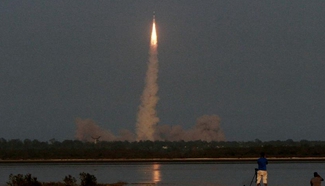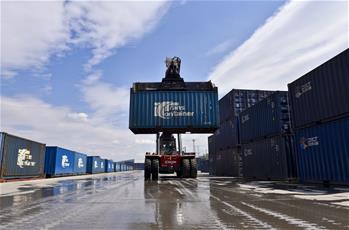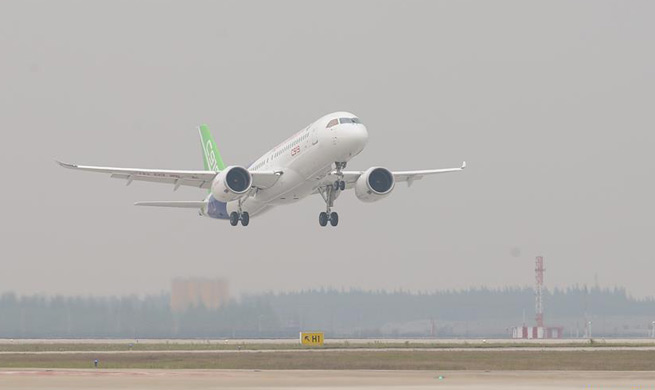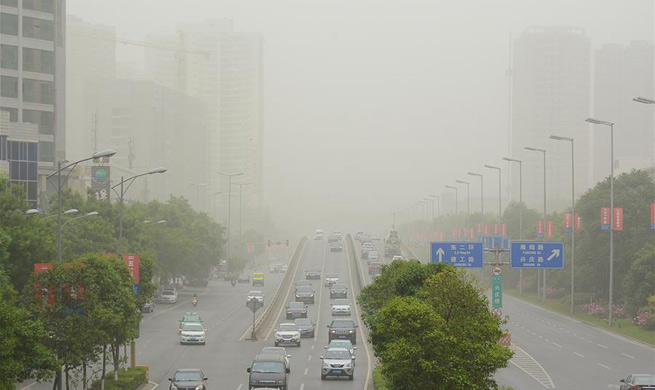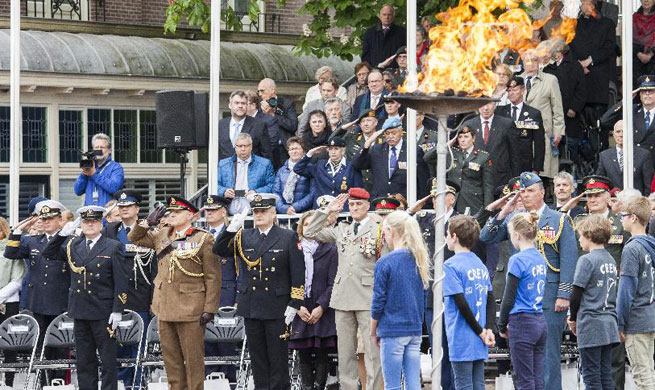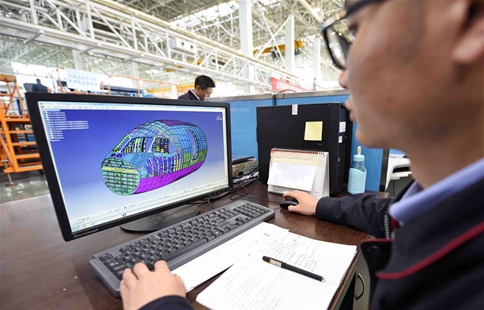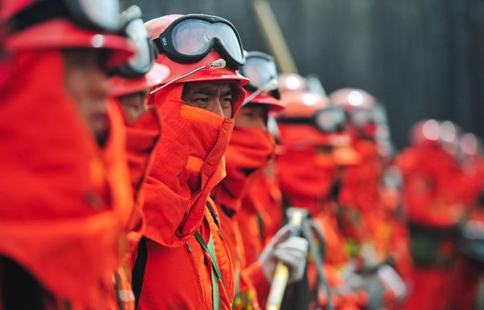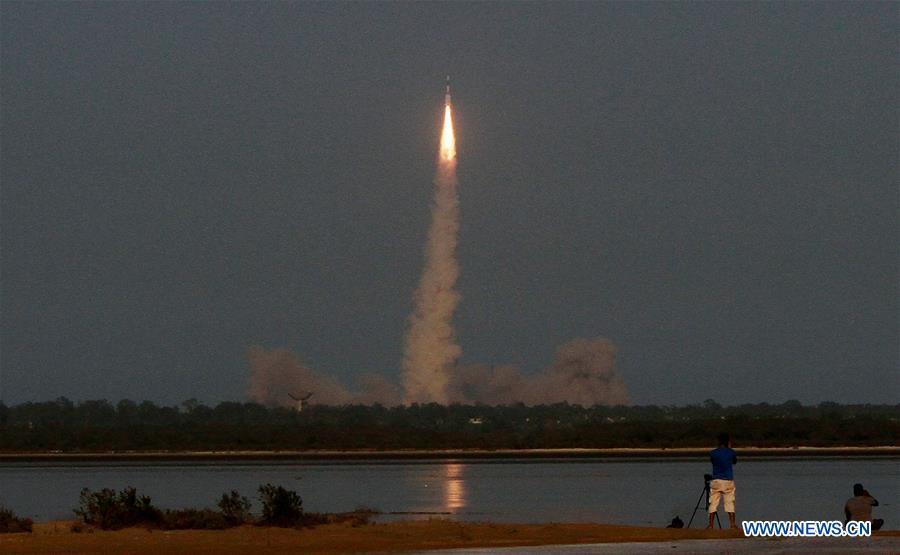
The GSLV-F09 rocket carrying India's GSAT-9, or the South Asia Communication Satellite, blasts off from the launch pad at the Satish Dhawan Space Center in Sriharikota, Andhra Pradesh, India, May 5, 2017. In its biggest space diplomacy push, Indian launched a South Asia communication satellite on Friday from the spaceport of Sriharikota in the southern state of Andhra Pradesh. (Xinhua/Stringer)
NEW DELHI, May 5 (Xinhua) -- In its biggest space diplomacy push, Indian launched a South Asia communication satellite on Friday from the spaceport of Sriharikota in the southern state of Andhra Pradesh.
The State-owned Indian Space Research Organisation's (ISRO) rocket, Geosynchronous Satellite Launch Vehicle (GSLV), carrying the 2,230 kg satellite GSAT-9, lifted off from the launch pad at Satish Dhawan Space Center in Sriharikota at 4:57 p.m. local time (1127 GMT).
ISRO, which has built the satellite for use by countries of the South Asian Association for Regional Cooperation (SAARC) region, said GSAT-9 has been launched with an objective to provide different communication applications in Ku-band with coverage over South Asia.
The satellite was originally named SAARC satellite, but was later changed to South Asia satellite after Pakistan opted out of the project, stating "it has its own space program."
Indian Prime Minister Narendra Modi lauded the country's scientists for the successful launch. "We are a united family of South Asian countries, united in our pursuit of peace, progress & prosperity of our region & the entire humankind," he tweeted soon after the launch.
Later joining the five heads of state of SAARC nations -- Afghanistan's President Ashraf Ghani, Bangladesh Prime Minister Sheikh Hasina, Maldives President Abdulla Yameen, Nepal's Prime Minister Pushpa Kamal Dahal and Sri Lankan President Maithripala Sirisena -- Modi hailed the launch.
"Today is a historic day, one without precedent. We extend our close links into Outer Space. Space technology will touch the lives of our people in the region. Convinced when we join hands and mutually share fruits of knowledge, technology and growth, we can speed up development," he said.
On his part, Afghanistan's President Ashraf Ghani said: "This is an extremely important step to know nature and nature's patterns. Development must be citizen centric. Today's development is child centred and women centred, it makes governance accessible."
Bangladesh Prime Minister Sheikh Hasina took the opportunity to thank India. "On today's auspicious occasion, I congratulate the Government of India (for the successful launch). Betterment of our people can happen through fruitful engagement," she said.
Modi, who had first announced the project during the 2014 SAARC Summit in Nepal as a gift to the regional countries, spelled out the date of launch of the satellite in his monthly radio program, Mann ki baat (talk from the heart) Sunday.
The satellite has 12 Ku-band transponders. It is cuboid in shape and built around a central cylinder has a mission life of over 12 years.
It is expected to help communicate during disasters and also focus on telemedicine and education. Each country can beam its own TV programs while there will be the possibility for a common South Asia programming.




